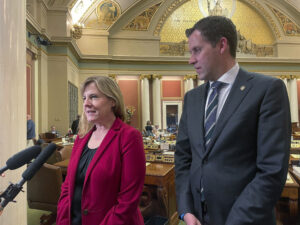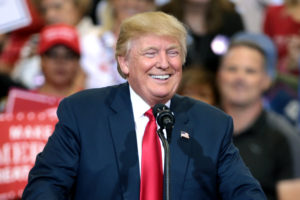The Debate Camera’s Deep Vision
The candidates heading into Friday's scheduled debate should heed the politician who first conquered the format, John F. Kennedy, who believed that the images portrayed via TV were "likely to be uncannily correct."“Honesty, vigor, compassion, intelligence — the presence or lack of these and other qualities make up what is called the candidate’s ‘image,’ ” the commentator wrote. “While some intellectuals and politicians may scoff at these ‘images’ — and while they may in fact be based only on a candidate’s TV impression, ignoring his record, views and other appearances — my own conviction is that these images or impressions are likely to be uncannily correct.”
The writer was Sen. John F. Kennedy. The publication was TV Guide and the date was Nov. 14, 1959.
Less than a year later, Kennedy would become the first presidential candidate to capitalize on the television age. His youth, his “vigor,” the compelling presence he established in contrast with a pallid Richard Nixon during their first debate — that early, electrifying glimpse of Camelot — would help propel JFK to the White House and inaugurate the era of televised presidential debates.
As long as there have been television and candidates, there has been a national conversation about whether this coupling is good for democracy or promotes a dangerously dumbed-down version of it. Even in 1959, Kennedy noted that “some intellectuals and politicians may scoff at these ‘images.’ ” Today, with the first general election debate of the 2008 campaign scheduled for Friday night, the ritual tsk-tsk-ing over which mordant sound bite, which gaffe or malapropism will elevate or sink Barack Obama or John McCain has begun on cue.
Is this any way to pick a president?
Democrats grouse that Al Gore’s sigh should not have cost him the 2000 election; Republicans fume over how the media made such a big deal over President George H.W. Bush’s awkward glance at his watch in 1992. One of the most memorable debate lines in contemporary history — Democratic vice presidential nominee Lloyd Bentsen’s put-down of the youthful Republican Dan Quayle as “no Jack Kennedy” — had Democrats euphoric and Republicans enraged. Yet it made not one bit of difference in the outcome of the 1988 race.
There is but one prediction about the upcoming debates that seems reasonable to make. That is, the public impressions formed from them is not likely to turn on whether Obama or McCain can articulate a foreign policy toward Belarus or provide to our jittery nation a clear explanation of credit default swaps. Since shockingly few Americans can properly identify the three branches of the U.S. government, let alone name the chief justice of the Supreme Court, the national decision-by-gut that is applied to judging debate performances should surprise no one.
The uneasy moments and outright flubs that candidates have made in debates tend to shape public reaction because they reinforce vague perceptions of the nominees that voters often have already formed. These, in turn, can be quite accurate. The famous Bernard Shaw question to Democrat Michael Dukakis in the second presidential debate of 1988 — “If Kitty Dukakis were raped and murdered, would you favor an irrevocable death penalty for the killer?” — was unfair, especially since it was the evening’s very first question. Yet Dukakis’ response, in which he outlined his long-standing opposition to the death penalty and boasted of a drop in crime in Massachusetts, was perfectly in keeping with the governor’s style. Dukakis hadn’t run as an emotionally inspiring leader. He’d staked his candidacy on his competence at running state government. Voters who sensed his coolness were accurately gauging his political style.
Likewise, Bill Clinton’s empathetic answers during the “town hall” debate in 1992 were a preview of his feel-your-pain presidency — and a hallmark of Clinton’s political persona to this day.
So before we get agitated about the fairness, the unfairness or the outright stupidity of some of the debate questions and contorted answers we are bound to hear in the coming weeks, look back to a president who is remembered more than any recent occupant of the Oval Office for his strong debate performances. In 1984, President Ronald Reagan was so widely seen as having flubbed his first debate with Walter Mondale — during which Reagan appeared forgetful and confused — that the president was asked if he would change his image to present a “new Reagan.” Of course not, he replied: “You get what you see. That’s me.”
Reagan, then, agreed with Kennedy’s assessment that television images convey impressions that are “uncannily correct.” And Kennedy’s list of attributes to watch for — “honesty, vigor, compassion, intelligence” — remains as valid today as it was when JFK enumerated these qualities nearly half a century ago.
Marie Cocco’s e-mail address is mariecocco(at)washpost.com.
© 2008, Washington Post Writers Group
Your support matters…Independent journalism is under threat and overshadowed by heavily funded mainstream media.
You can help level the playing field. Become a member.
Your tax-deductible contribution keeps us digging beneath the headlines to give you thought-provoking, investigative reporting and analysis that unearths what's really happening- without compromise.
Give today to support our courageous, independent journalists.






You need to be a supporter to comment.
There are currently no responses to this article.
Be the first to respond.